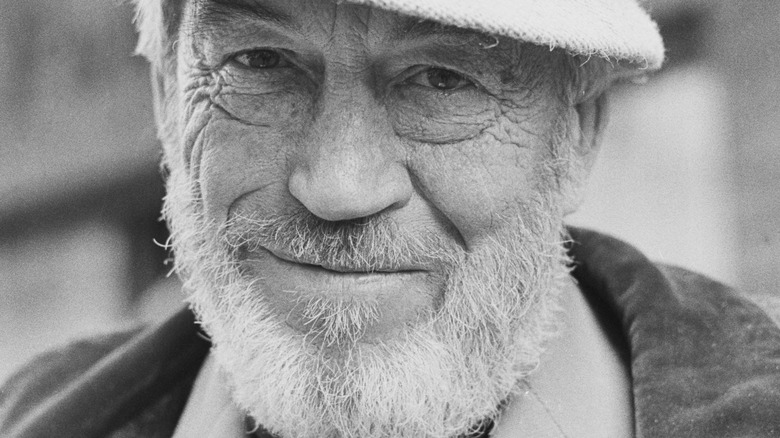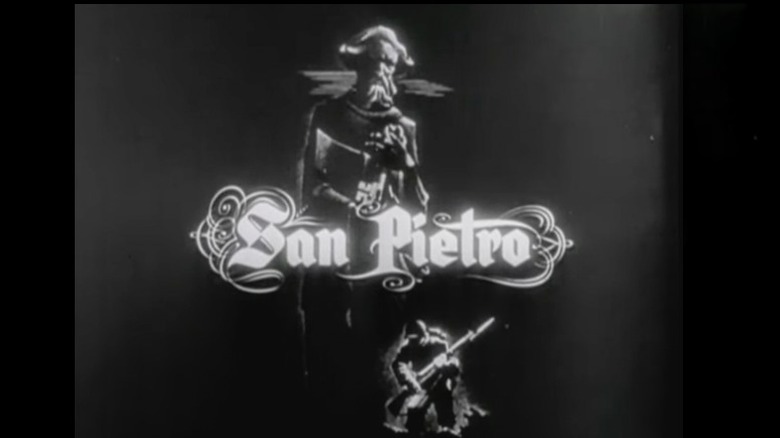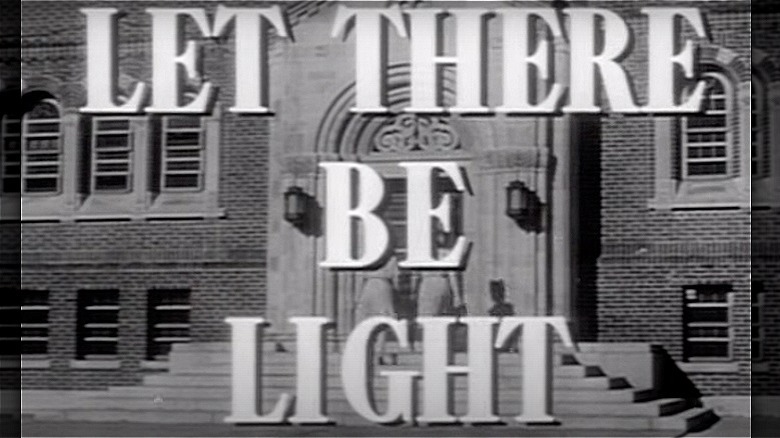The Reason Why John Huston's Landmark WWII Documentary Took 35 Years To Release
As the camera pans across the side of a World War II troop transport ship to show returning soldiers waving out of the portholes, a narrator speaks: "The guns are quiet now. The papers of peace have been signed ... In faraway places, men dreamed of this moment. But for some men, the moment is very different from the dream." So begins famed Hollywood director John Huston's third documentary film for the U.S. Army, "Let There Be Light." The film, shot at the end of the war in 1945, followed 75 returning U.S. Army veterans dealing with post-traumatic stress disorder (PTSD), or what was then known as "shell shock" or "psychoneurosis," during their treatment at a hospital in Long Island, N.Y., according to The Guardian.
By the time Huston finished the documentary, he was already on thin ice with the Army's top brass for his 1945 film, "The Battle of San Pietro." At its screening in Washington, D.C., several generals walked out. "I was left alone with the lowest ranking officer in the Pentagon next to me," the Oscar-winning director of such classics as "The African Queen" and "The Treasure of the Sierra Madre" later recalled, according to the National Film Preservation Board. If Huston thought he was going to fare better with the Army brass on his third film, he was very, very wrong.
John Huston joins the U.S. Army
After the U.S. entered World War II, like many in Hollywood, John Huston wanted to do his part for the war effort. He reported for duty in April 1942 at the U.S. Army Signal Corps headquarters in Washington D.C., per the National Film Preservation Board. He already made a name for himself in Hollywood as a screenwriter and director of "The Maltese Falcon,'" starring Humphrey Bogart.
Soon Huston was directing his first film for the Army, "Report from the Aleutians," released in 1943. The brass seemed happy with Huston's initial effort, but the relationship began to sour with his second film. The Pentagon didn't want to release the film, feeling it had an anti-war sentiment and would discourage soldiers from going into combat for the first time, according to "John Huston: Interviews." It took Army Chief of Staff Gen. George C. Marshall to step in to get the documentary released. But the third film had no such allies.
Psychological wounds of war
In the hour-long documentary, "Let There Be Light," John Huston followed combat veterans from admission to the hospital through release. Some veterans had dramatic recoveries, including one man who initially could not speak but had a breakthrough during a therapy session, per The Guardian. The Army was not happy with Huston's documentary, so much so that they shelved the film. "For some reason, to see a psyche torn asunder is more frightening than to see people who have physical wounds," Huston recalled, per "John Huston: Interviews." The Army brass claimed the film violated the privacy of the soldiers involved, but Huston countered that all the men signed releases, according to the National Film Preservation Board. However, that didn't matter. Huston believed the real reason was that the film ran counter to the mythos of the stoic soldier.
"Let There Be Light" was personal for Huston. While filming his combat documentary, "The Battle of San Pietro," under constant German shelling and aerial bombardment, he began experiencing nightmares and psychological distress, per the National Film Preservation Board. The Army honorably discharged Major John Huston in 1945 and returned to Hollywood, where he continued his acclaimed film career. The Army finally agreed to release "Let There Be Light" in December 1980, per the National Film Preservation Foundation. Huston died in 1987, age 81, per Britannica. He received the U.S. Military Legion of Merit medal for filming under combat conditions.


